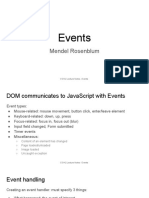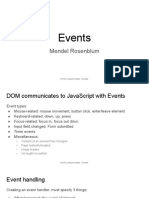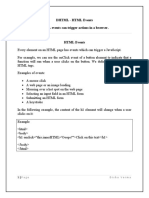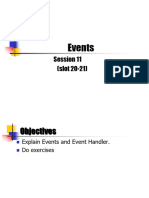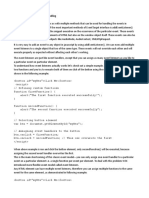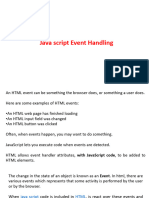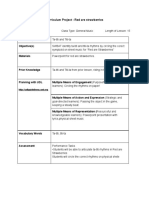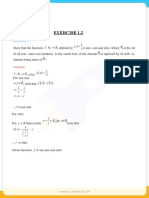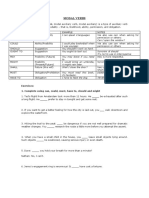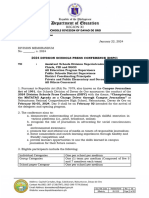0% found this document useful (0 votes)
62 views19 pagesEvent Handling
This document discusses JavaScript events and event handling. It covers the following key points:
1. Events are actions that occur within a web page, like clicks or keyboard presses. JavaScript uses asynchronous callbacks to handle events.
2. There are two phases to event propagation - capturing and bubbling. Event handlers can be defined using addEventListener() or attachEvent() depending on the browser.
3. The Event Object provides contextual information about the event and is available within event handler functions. Methods like stopPropagation() can control event propagation.
Uploaded by
meghan aroraCopyright
© © All Rights Reserved
We take content rights seriously. If you suspect this is your content, claim it here.
Available Formats
Download as PDF, TXT or read online on Scribd
0% found this document useful (0 votes)
62 views19 pagesEvent Handling
This document discusses JavaScript events and event handling. It covers the following key points:
1. Events are actions that occur within a web page, like clicks or keyboard presses. JavaScript uses asynchronous callbacks to handle events.
2. There are two phases to event propagation - capturing and bubbling. Event handlers can be defined using addEventListener() or attachEvent() depending on the browser.
3. The Event Object provides contextual information about the event and is available within event handler functions. Methods like stopPropagation() can control event propagation.
Uploaded by
meghan aroraCopyright
© © All Rights Reserved
We take content rights seriously. If you suspect this is your content, claim it here.
Available Formats
Download as PDF, TXT or read online on Scribd
/ 19









